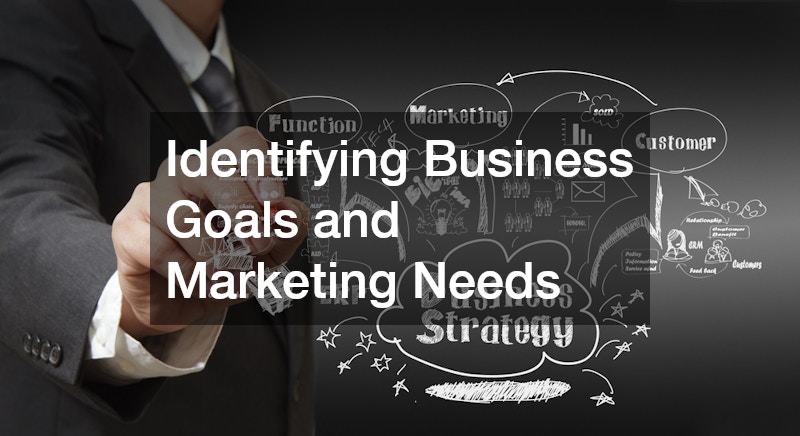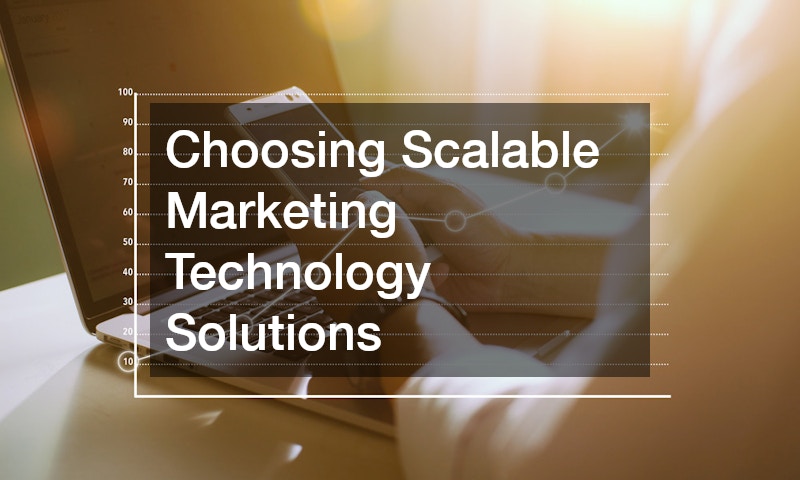In today’s digitally driven business landscape, having a well-defined marketing strategy is no longer a luxury—it’s a necessity. For commercial contractors, the stakes are even higher. With complex projects, long sales cycles, and an ever-growing competitive landscape, these businesses need more than traditional advertising and word-of-mouth referrals. They need systems that can support long-term growth, help identify new opportunities, and generate a measurable return on investment. This is where a marketing technology strategy comes into play, offering a cohesive framework that unifies tools, platforms, and data to create efficient and targeted marketing efforts.
While marketing technology can sound daunting, it doesn’t need to be. The key lies in taking a strategic approach: understanding the business’s unique goals, evaluating its current capabilities, and then layering the right technologies to drive results. Commercial contractors can improve visibility and client engagement by adopting this structured mindset, streamline internal processes, and reduce operational waste. Over the following sections, we’ll explore how contractors can begin developing and refining their strategy to remain competitive and relevant in an evolving market.
Identifying Business Goals and Marketing Needs

Before investing in any digital tools, it’s crucial for commercial contractors to clarify what they’re trying to achieve. Are they aiming to increase brand awareness, generate more leads, improve client retention, or expand into new markets? Without clearly defined business goals, even the most advanced technologies will fall short of expectations. Establishing objectives ensures that every marketing effort is purpose-driven and aligned with overall business priorities. This foundational step acts as a compass, guiding all future decisions within the marketing technology strategy and making it easier to measure success.
For example, a waterproofing service company may prioritize increasing local visibility and converting more website visitors into booked consultations. These goals would influence the selection of digital tools, such as implementing a live chat feature, enhancing local SEO, or integrating CRM software that tracks leads and follow-up activity. By aligning marketing needs with overarching business outcomes, contractors can avoid unnecessary spending on ineffective platforms and instead build a tailored system that drives tangible results.
Assessing Current Marketing Technology Capabilities
Once business goals have been clearly defined, the next essential step in developing a marketing technology strategy is to conduct a thorough audit of the existing digital tools and systems. This process provides a clear picture of what technologies are currently in use and how effectively they support marketing efforts. Contractors often accumulate a range of platforms over time—some adopted out of necessity, others introduced by different team members or vendors. These tools can become fragmented, underutilized, or even counterproductive without a comprehensive review. The audit helps uncover which systems are contributing to marketing success, which are creating friction, and where there are overlaps or inefficiencies.
During this assessment, everything from email marketing platforms and analytics dashboards to social media schedulers and CRM systems should be evaluated through functionality, ease of use, and integration. Tools that don’t align with current goals or cannot grow with the company may need to be phased out or replaced. However, the objective isn’t to discard every existing solution and start over. Instead, it’s about refining the tech stack to ensure all components work together harmoniously and support the overall strategy.
Let’s say a demolition company already uses a basic customer database and posts occasionally on social media. An assessment might reveal that their system lacks automation, analytics, or integration with job scheduling tools. By identifying these shortcomings, demolition companies can prioritize investments in platforms that support automated follow-ups, track engagement, or sync with project management software. This strategic evaluation process ensures that future enhancements are built on a solid foundation, making the entire strategy more efficient and aligned with the company’s marketing goals.
Aligning Technology With Target Audiences
A powerful marketing technology strategy doesn’t begin with flashy tools—it starts with understanding the audience. For commercial contractors, this means identifying their ideal clients, what pain points they experience, where they spend their time online, and how they prefer to receive information. Without this insight, even the best marketing tools will fail to create meaningful connections. Once contractors have a detailed buyer persona, they can use this information to guide decisions about content, platform selection, automation, and user experience—all tailored to meet the audience where they are.
Consider a commercial roofing business that primarily serves property managers and industrial clients. These customers may value professionalism, safety credentials, and long-term cost savings. Knowing this, the company might prioritize a polished website with project portfolios, implement marketing automation to send follow-up emails after inquiries, and focus on SEO strategies that target keywords used by building owners and maintenance teams. Every tool and tactic chosen should reinforce the message that the company understands and meets its audience’s needs, turning technology into a bridge, not a barrier.
Choosing Scalable Marketing Technology Solutions

Scalability is a core consideration when building a marketing technology strategy. Commercial contractors should think beyond immediate needs and select platforms to grow with the business. This involves choosing tools for more users, additional features, deeper integrations, or broader reach as the business expands. A scalable solution reduces the need for frequent system overhauls and supports long-term marketing efforts, helping companies evolve without disrupting their operations or retraining staff every year.
For instance, commercial building contractors might start with a simple email marketing tool. Still, as the company takes on larger projects and more complex bids, it will benefit from a platform that includes customer segmentation, A/B testing, and lead scoring. Likewise, investing in a CRM that can handle hundreds of contacts, multiple sales pipelines, and integrations with proposal or estimating software will pay off over time. Thinking big from the beginning—even if starting small—ensures that marketing technology remains an asset, not a limitation, as the business scales.
Integrating Marketing Tools Across Platforms
A marketing technology strategy only works well when all tools communicate effectively. Integration ensures that data flows seamlessly between platforms, reducing manual entry, avoiding duplication, and creating a unified picture of customer behavior and campaign performance. Whether it’s linking a website’s contact form with a CRM, connecting social media ads to analytics dashboards, or syncing email campaigns with lead scoring tools, integration leads to smarter, faster decisions and a better customer experience.
Take a local equipment rental company, for example. If their online booking system doesn’t sync with their CRM, they may struggle to track which marketing efforts drive rentals or fail to follow up with returning customers. By integrating their website, email platform, and sales tracking tools, they can automate confirmations, retarget website visitors with ads, and gather valuable insights into which promotions perform best. This level of coordination improves efficiency and gives contractors the real-time data needed to adjust and improve their strategy on the fly.
Establishing Clear Metrics for Success
Without defined metrics, evaluating whether a marketing technology strategy is working is impossible. Setting clear, measurable goals—such as lead conversions, website traffic growth, or customer acquisition cost—helps commercial contractors stay accountable and make data-driven decisions. These metrics should be aligned with broader business objectives and tracked consistently using the right digital tools. Analytics dashboards, CRM reporting, and campaign tracking software are critical in turning raw data into meaningful insights.
For a dumpster rental service, key performance indicators might include online quote requests, booking completions, or the return rate of previous customers. With a marketing technology strategy, the company can use digital dashboards to monitor which marketing campaigns bring in the most profitable leads and which service areas show the highest demand. These clear metrics ensure marketing efforts aren’t just active—they’re effective and continuously improving.
Training Teams to Use Marketing Technologies

Even the most advanced platforms won’t deliver value if employees don’t know how to use them. That’s why internal training is vital to implementing any marketing technology strategy. Training ensures that team members, from sales reps to administrative staff, understand how to operate new tools, interpret data, and apply insights to their roles. It also promotes buy-in and reduces resistance to change, a common challenge when adopting new systems.
Consider a vacuum excavation company investing in a new CRM and project tracking platform. Without proper training, staff may revert to spreadsheets or inconsistent communication methods, defeating the purpose of the upgrade. By offering structured onboarding, video tutorials, and ongoing support, the company ensures that its marketing technology strategy is adopted fully and used correctly. This empowers the team to engage clients more effectively, respond to leads faster, and improve overall operational efficiency.
Ensuring Data Security and Compliance Standards
As commercial contractors collect more customer data, ensuring security and regulatory compliance becomes critical. A strong marketing technology strategy must include safeguards for protecting client information, particularly when using tools that handle email communication, lead tracking, and analytics. Beyond building trust, maintaining compliance with laws like GDPR or CAN-SPAM helps prevent costly penalties and reputational damage. Selecting platforms with strong data protection features is just the beginning—contractors must also establish internal protocols for handling and storing data responsibly.
An engineering consultant firm, for instance, might manage sensitive design files, client communications, and contract data through cloud-based platforms. If these systems are not secured or access is poorly managed, the risk of data breaches or compliance violations increases. Incorporating encryption, two-factor authentication, and regular audits into their marketing technology strategy protects the business and reassures clients that their information is in good hands.
Monitoring Performance and Making Adjustments
A marketing technology strategy is not a one-and-done initiative—it requires regular evaluation and refinement. By monitoring performance, contractors can identify which efforts are working and which are falling short. This involves consistently reviewing analytics, customer feedback, campaign results, and return on investment. One of the most significant advantages of digital marketing technologies is the ability to pivot quickly based on data, enabling businesses to stay agile and responsive in a constantly shifting market.
Let’s say a company offering services from local plumbers launches a new online campaign to promote emergency repairs. If the results show high click-through rates but low conversion, it could indicate that the landing page isn’t aligned with customer expectations. Proper monitoring tools allow the company to quickly identify this issue and adjust the page content or call-to-action to improve performance. Continuous optimization ensures the marketing technology strategy remains effective and aligned with business goals.
Planning for Future Marketing Technology Growth

To stay competitive in a fast-moving digital world, contractors must think ahead. A forward-looking marketing technology strategy considers current needs and future opportunities. This means choosing regularly updated platforms, exploring emerging technologies like AI or predictive analytics, and building flexibility into your systems. Planning also involves budgeting for upgrades and encouraging innovation within the team to stay ahead of the curve.
For a spray foam insulation company preparing to expand into new markets, future planning might include investing in a scalable email platform, upgrading its website to handle multilingual content, or integrating AI-powered chatbots to assist with inquiries 24/7. These forward-thinking moves help the company serve a growing customer base while keeping operations streamlined. Future-proofing a marketing technology strategy ensures that the systems in place support, not hinder, growth.
Developing a marketing technology strategy for commercial contractors is more than choosing the right tools—it’s about aligning technology with business goals, team capabilities, and the specific needs of target customers. It starts with a clear understanding of where the business is headed and what success looks like, followed by a thoughtful evaluation of current systems and a commitment to selecting scalable, integrated solutions. It requires ongoing training, performance monitoring, and future-focused planning to keep the strategy adequate and relevant.
Whether the contractor specializes in demolition, roofing, plumbing, or insulation, the same core principles apply: understand the customer, choose smart tools, track what works, and continuously improve. Following this structured approach, contractors can elevate their marketing efforts from reactive to strategic, transforming digital tools into powerful growth engines. A well-executed marketing technology strategy doesn’t just support the business; it becomes a competitive advantage that sets it apart in a crowded marketplace.


